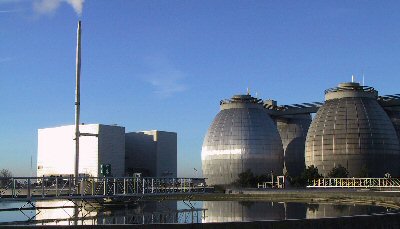Project - BioCrete - BioCrete
Project title: Utilisation of ash from incineration of wastewater sludge (bio ash) in the production of concrete
The objective of the project was to remove technical barriers for the utilisation of wastewater sludge incineration ash (bio ash) in the production of concrete, and at the same time reduce the amount of waste for disposal.

The bio ash can be added to concrete to supplement or in some cases even substitute Portland cement. Research projects indicate that concrete with bio ash has acceptable strength and that heavy metals of the ash will be immobilized to such an extent that it is environmentally acceptable to use bio ash in concrete. This is directly in line with the Sixth Community Environmental Action Programme calling for better waste management, sustainable production and consumption patterns. With reference to the 6th Environment Action Programme of the EU, the project will also contribute to clean technologies and reduction of greenhouse gases by the cement substitution, while reducing the amounts of waste (bio ash) for disposal.
This project aims to demonstrate that bio ash can indeed feasibly be used in concrete irrespective of the point of view taken; concrete technology-wise, environmental-wise or economy-wise.
Actions and means
At the beginning of the project period (2005) small scale tests had already demonstrated that it was possible to use bio ash concrete for limited purposes; but even though the Danish National Application Document (NAD), which is an appendix to EN 206, allows bio ash concrete for indoor use, the actual use of bio ash in concrete was very limited. Unless more documentation of bio ash and bio ash concrete emerged an increased use of bio ash concrete was unlikely.
In order to provide the necessary documentation to overcome the barriers for extensive use of bio ash concrete, the project was executed in two major phases:
- Design, construction, implementation and use of systems required for full-scale production of bio ashes concrete – as these systems did not exist.
- Tests in the laboratory and in the field of the properties of the bio ash and bio ash concrete in order to document that full scale production of bio ash concrete can take place without adverse effects on the final structures.
The laboratory tests of the bio ash and concrete included documentation of the chemical and physical properties of bio ash over a full production year, the leaching of heavy metals from bio ash concrete, the development of strength of bio ash concrete (including the consequences of the content of phosphate in the ashes), and the long-term durability of the bio ash concrete. Existing bio ash concrete structures was be investigated to establish the state art with respect to field performance of bio ash concrete.
The full scale production test consisted of activities relating to the design and installation of outlets for dry bio ash at the incineration plants, the design and installation of bio ash handling facilities at the concrete plant, the delivery of bio ashes concrete to various construction sites in the Copenhagen area including extended testing and follow up on the execution experiences during casting of the concrete.
![]()
During all stages of the project, dissemination was emphasised. At the early stage a project website was published and the project partners informed about the existence of the project. As the project generates results these were made available at the project website and the partners spread the new knowledge through their network including presenting findings at meetings in relevant European branch organisations (e.g. European Ready Mixed Concrete Organisation).
Expected results
It was expected that at the end of the project at least 50% (5000 tons) of the total annual production of bio ash in the Copenhagen area was used in concrete production, and that bio ash concrete was a well-established type of concrete. A handbook with guidelines for use of bio ash in concrete has been be issued, and can be seen in "dissimination”. The guidelines includes a proposal for quality control parameters of bio ash production and deals with issues requiring special attention during execution/casting of bio ash concrete.
The project findings has been disseminated to relevant industrial and academic societies in Europe via the partner’s branch organisations, journal articles, seminars, as well as through the European ECO-serve network.